Affiliate links on Android Authority may earn us a commission. Learn more.
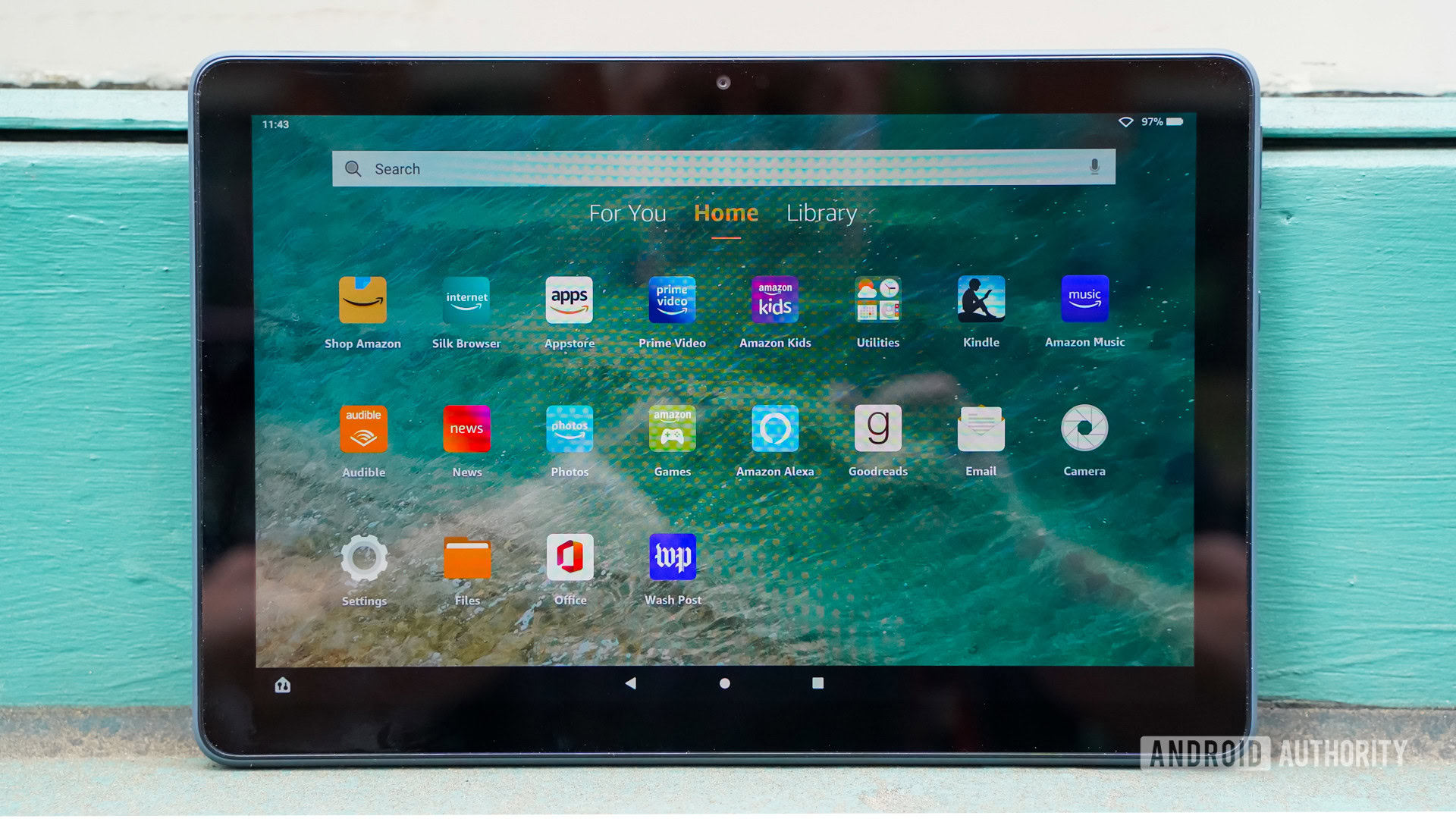
Amazon Fire HD 10 Plus review: Is Amazon's biggest tablet its best?
June 22, 2021
Amazon Fire HD 10 Plus
MSRP:
What we like
What we don't like
Amazon Fire HD 10 Plus
Tablets come in all manner of price points and use cases. Some people want large screens for getting work done while others prefer smaller displays for simple tasks. The type of tablet you get depends heavily on what you’ll use it for. The Amazon Fire HD 10 Plus is a 10-inch slate that straddles the border of entry-level and mid-range tablets. Though its main purpose is for enjoying content, it’s got some work skills, too. Find out if it has the right mix of features for you in Android Authority‘s Amazon Fire HD 10 Plus review.
What you need to know about the Amazon Fire HD 10 Plus
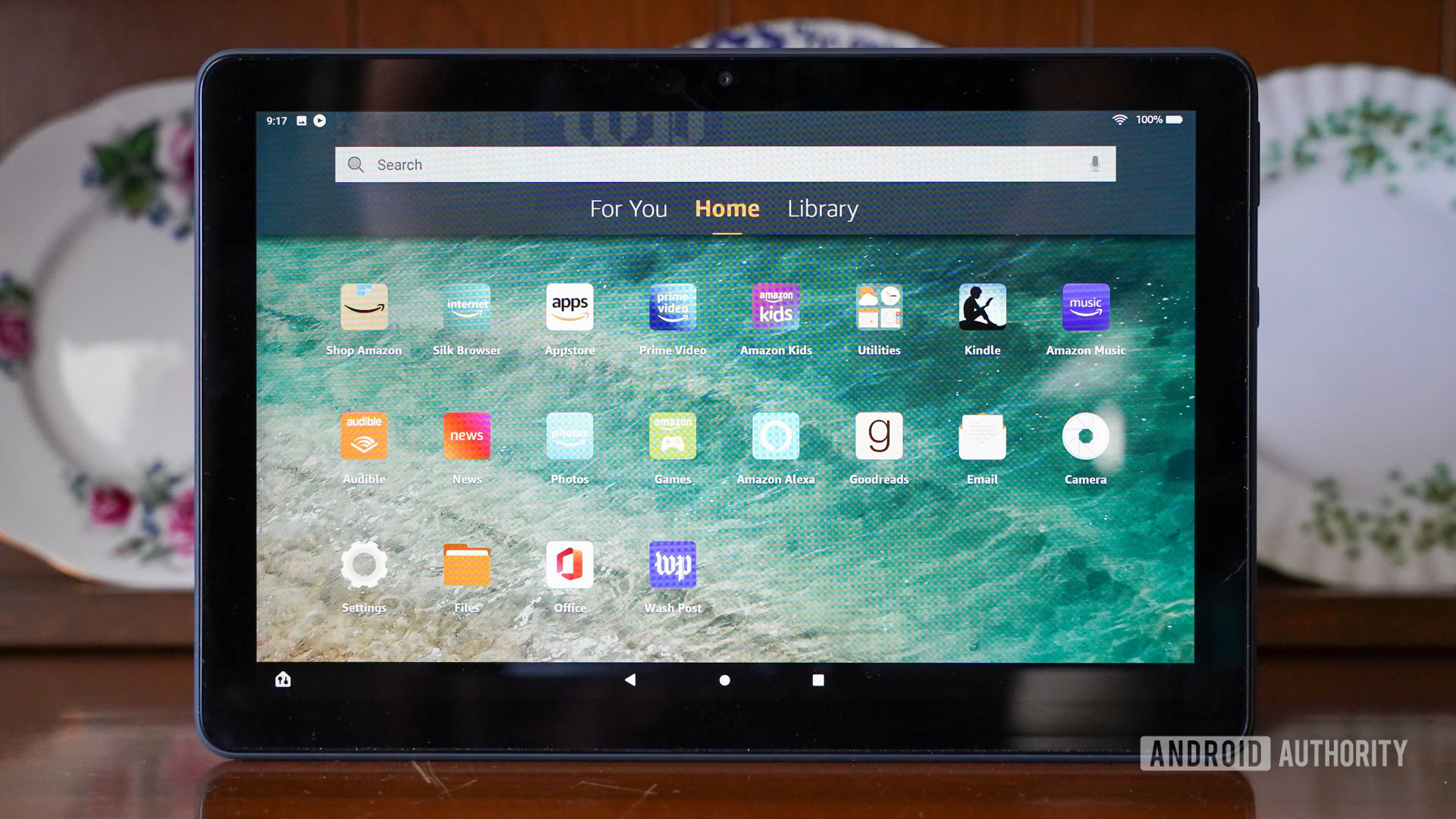
- Amazon Fire HD 10 Plus (32GB with ads): $179.99/£129/€149
- Amazon Fire HD 10 Plus (32GB without ads): $194.99/£139/€159
- Amazon Fire HD 10 Plus (64GB with ads): $219.99/£154/€179
- Amazon Fire HD 10 Plus (64GB without ads): $234.99/£164/€189
The Fire HD 10 Plus (2021) stands at the top of the Amazon Fire tablet lineup. Below it, you’ll find the Fire HD 10 (2021), which has less RAM and drops the wireless charging. There is also Amazon’s Fire 8 series and the Fire 7 series. A separate line of Amazon Fire tablets is available specifically for young kids. They are sold with a case and a protection plan.
The Fire HD 10 Plus comes in two basic versions, one with 32GB of storage and another with 64GB of storage. You’ll pay $40 extra to double the storage, though it is worth noting that the tablet supports microSD memory cards up to 1TB.
You’ll have to decide if you want to deal with ads. As with all Fire tablets, you can choose your experience — with or without lock screen ads. Going sans ads will cost you $15 more than if you choose to view the lock screen ads. A different ad shows up on the lock screen every time you wake the screen. The ads also appear in a carousel on the home screen. Personally speaking, I think $15 isn’t all that much extra to pay for the ad-free experience.
Last, the productivity bundle. You can buy the Fire HD 10 Plus (32GB with ads) with a Bluetooth keyboard accessory and a year-long subscription to Microsoft 365 starting at $249.99. This package is meant to appeal to road warriors.
Amazon sells its entire range of Fire tablets via its website, though they are also available from retailers such as Best Buy and Target. I’ve even seen Fire tablets in Best Buy vending machines at airports.
Why pick the Amazon ecosystem?
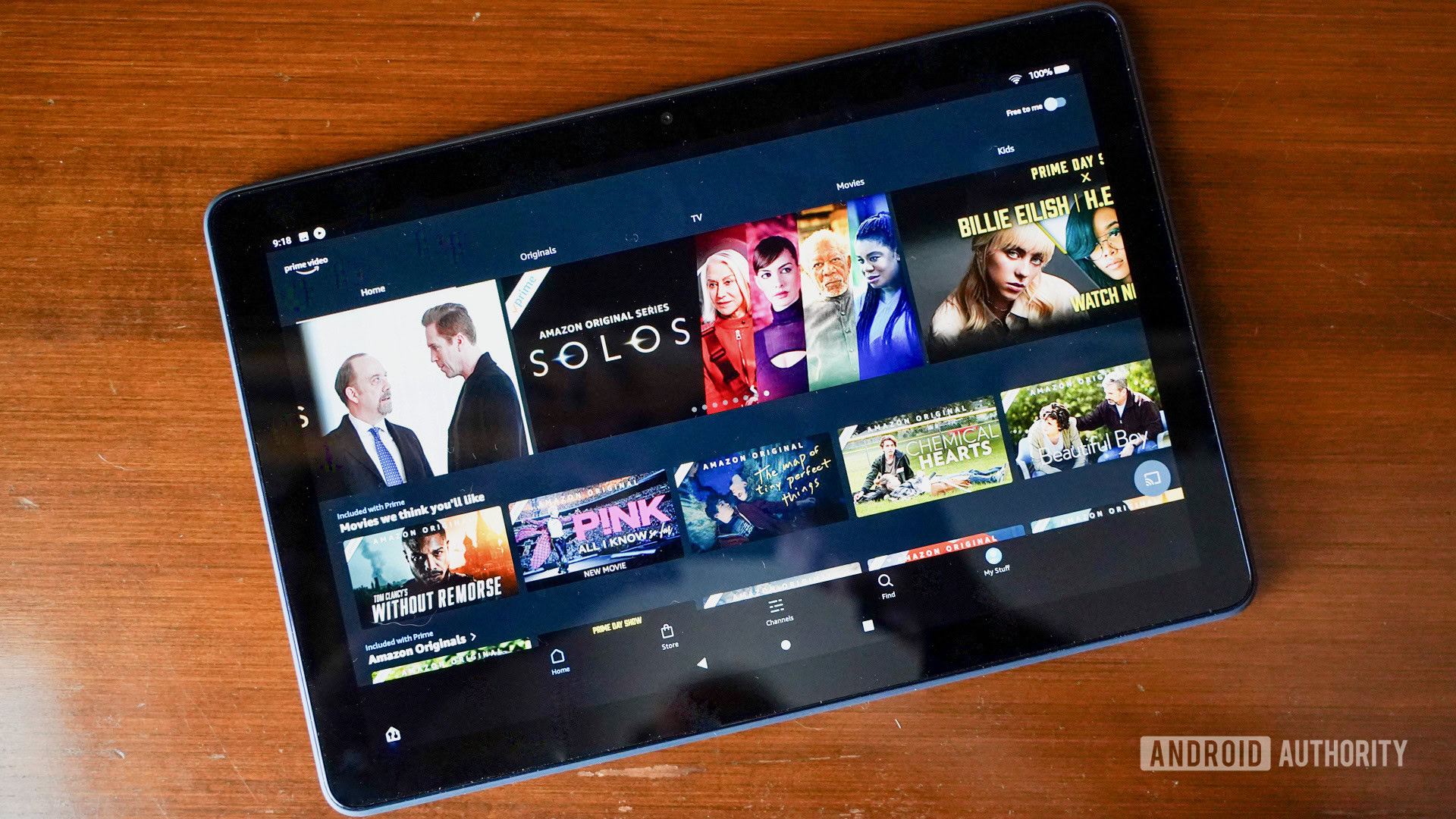
Hardware purchases these days are rarely made in a vacuum. There are some products you can buy without considering the larger ecosystem at play, but more often than not you’re buying into the worldview of one company or another. Every ecosystem has strengths and weaknesses. What are Amazon’s?
The Amazon Fire HD 10 Plus is best enjoyed with an Amazon Prime subscription. Prime, which costs $12.99 per month or $119 per year, is what gives you access to Amazon Prime Video, Amazon Music, Amazon Photos, and Amazon Kids Plus. Prime Video is Amazon’s video content library which includes well-known movies and television shows, as well as Amazon originals, such as Jack Ryan or The Boys. Amazon Music includes free listening to two million songs ad-free, plus millions of podcasts. Amazon Photos allows you to store an unlimited number of full-resolution photos and Kids+ gives kids access to kid-friendly books, movies, and TV shows. Yes, you also get discounted shipping.
Amazon Prime Video: Pricing, content, and everything else you need to know
The kicker, however, is this: Prime subscribers can get all these Amazon features on the Apple iPad, regular Android tablets, and even Microsoft slates. Apple, Google, and Microsoft have excellent ecosystems and Amazon supports them fully in addition to its own hardware.
Without Prime, Fire HD 10 Plus buyers would be limited to third-party content from the likes of Netflix, Hulu, and Spotify — all of which have their own pricing models.
Everything you can do with a standalone Alexa speaker, you can do with the Fire HD 10 Plus.
Then there’s Alexa. Amazon Alexa is baked into the Fire HD 10 Plus. Everything you can do with a standalone Alexa speaker, you can do with the Fire HD 10 Plus. Engaging with Alexa is as simple as speaking its name and asking a question or issuing a command. “Hey, Alexa, play Billy Joel” works just fine to get some music going or a podcast playing. Moreover, you can put the tablet into Show Mode with a simple command and it will act like one of Amazon’s smart hubs. This can be really helpful if you’re using it in the kitchen to help with a recipe.
If you’re already an Alexa household — meaning you have Alexa-powered speakers or gear in your home — it would be natural to pick the Fire HD 10 Plus for its Alexa integration.
But why pick Amazon’s hardware over these other ecosystems? Cost and convenience. For Prime subscribers, you get a lot of content for “free” on the Fire tablet through your existing membership, which means you won’t necessarily have to rely on other apps (which cost more money) for content.
What is the Fire HD 10 Plus like to use?
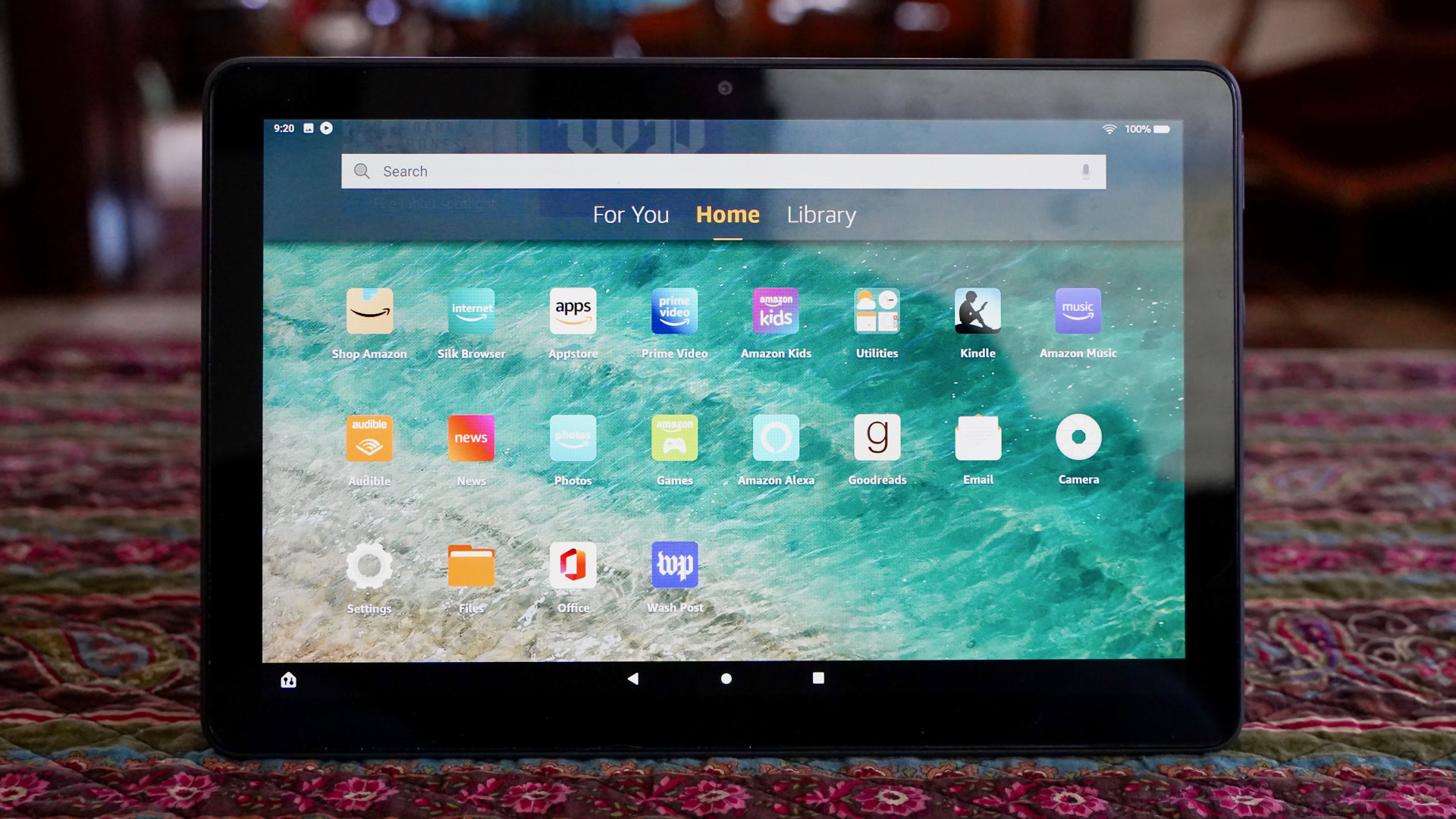
The Fire HD 10 Plus gets its name from the screen. The IPS LCD panel measures 10.1-inches and offers 1,920 x 1,200 Full HD+ resolution in a 16:10 aspect ratio. Amazon says the screen is protected by aluminum silicate, but the company won’t say if it is Gorilla Glass or not (which suggests it isn’t). The Fire HD 10 Plus and Fire HD 10 share the exact same display.
The resolution means text and icons on the screen appear clean and sharp. It’s a big step up from the HD+ resolution on other Fire tablets such as the Fire HD 8 Plus, for example, which only pushes 1,280 by 800 pixels. The HD 10 Plus’ screen is not as sharp as competing screens from Apple and others, and the screen brightness could be better. It’s more than adequate for indoor use, but introducing any amount of sunlight challenged visibility. I noticed plenty of glare outdoors, which would make reading books, for example, a more difficult task. Watching movies at night in a dark room, the screen looks good. Overall, it’s an average screen that’s serviceable at this price.
The Fire HD 10 Plus is a basic tablet. Fittingly, it handles the basics well.
The rest of the hardware is fairly vanilla in terms of design and functionality. A soft-touch, matte black finish called Slate is the only color option available, and it’s exclusive to the Plus version of the Fire HD 10. It looks more gray than black. The soft-touch material, which forms the entire rear panel and side edges, makes the tablet easier to hold onto. The texture lends some grip, but it collects fingerprints in the worst way. It’s also very hard to wipe clean due to the nature of the material.
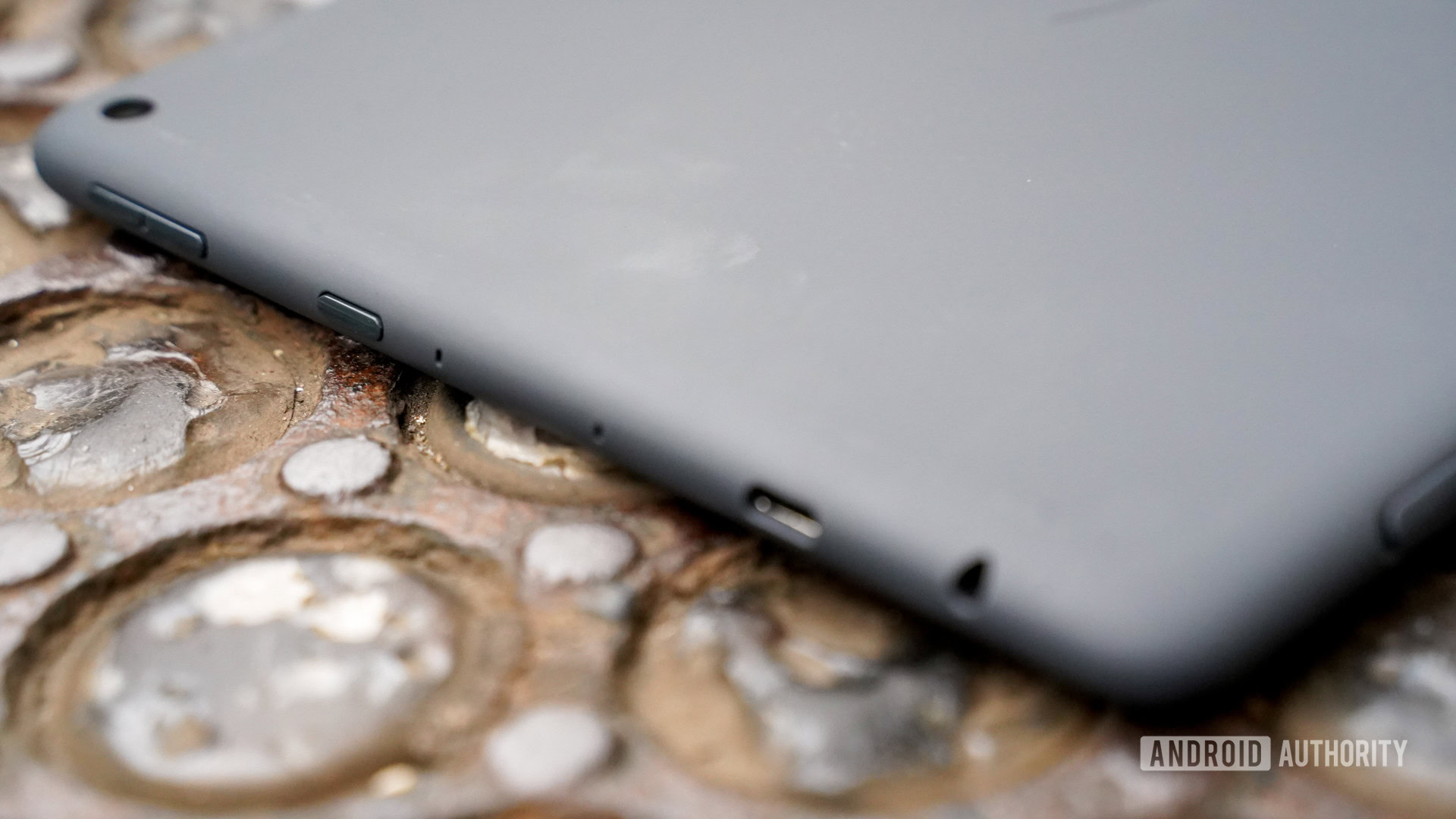
The fit and finish are fine for a $180 tablet and the hardware is light and easy to use. That means holding it for hours to watch movies or read books isn’t a bother. Other entry-level tablets, such as the Samsung Galaxy Tab A7 and the Lenovo Smart Tab M10, have higher quality hardware thanks in part to metal components, and they are just as easy to hold and use.
The USB-C port and headphone jack are found on the side edge, while stereo speakers are located on the top and the microSD card slot is tucked into the bottom.
The Fire HD 10 Plus is a basic tablet and handles the basics well. It doesn’t really do anything to stand out from the crowd, but that’s all part of the appeal.
What is Fire OS?
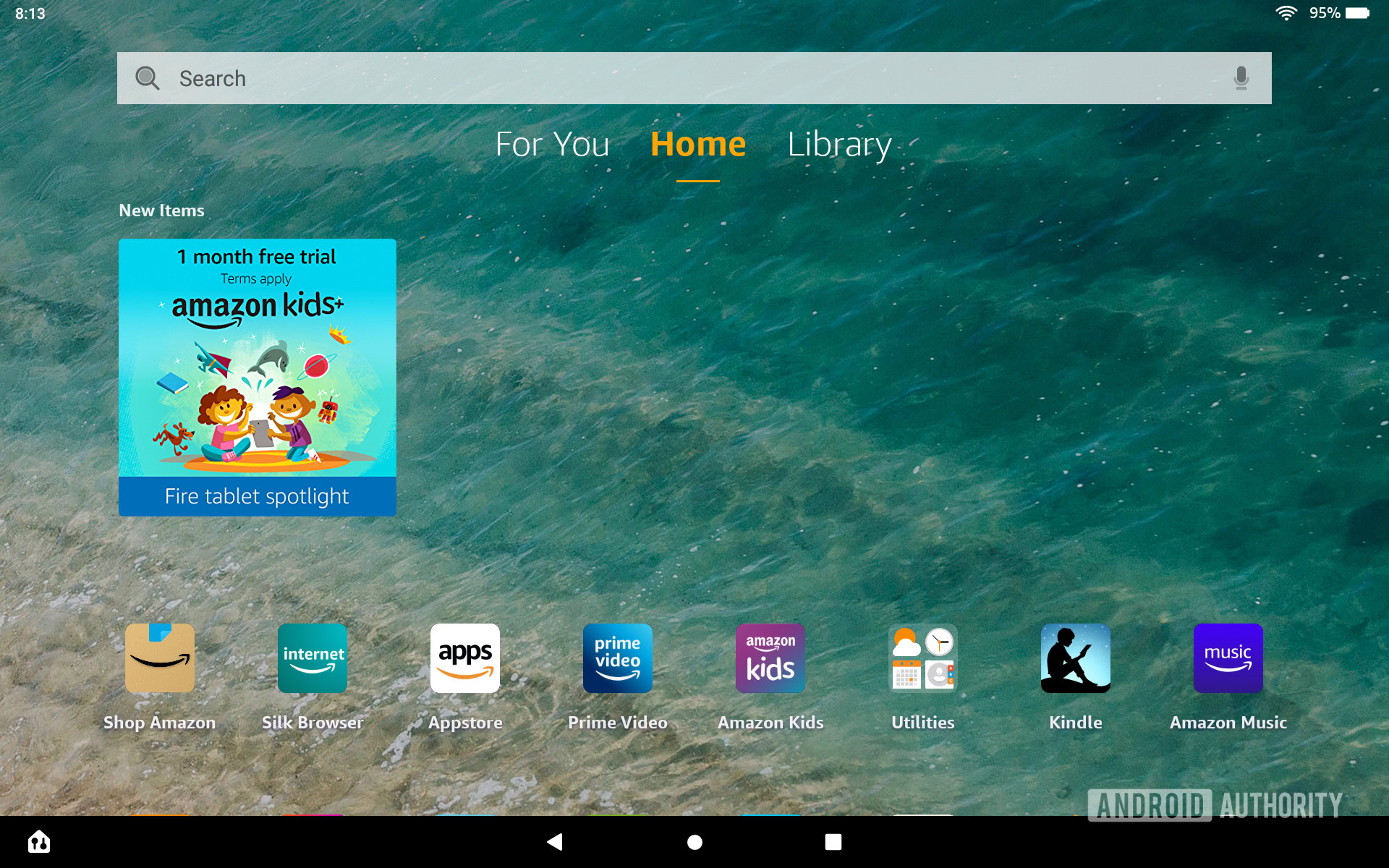
The Fire HD 10 Plus runs Fire OS 7.3. Amazon’s Fire OS is a fork of Android 9 (yes, Android 9); sometimes it hardly feels like Android at all.
In the simplest terms, Fire OS shares its foundation with Android. The biggest differentiator is the services. Where most Android devices rely on Google Services, Fire OS devices rely on Amazon Services. This means you’ll find apps in the Amazon Appstore, rather than the Google Play Store. It also means that core apps, such as the browser, mapping, messaging, email, and more are handled by Amazon’s apps rather than Google’s. Fire OS runs Android apps, but not all Android apps are available to Fire OS via the Amazon Appstore. For example, Google apps are not.
If you’re hardcore, gung-ho about running your favorite Android apps on the Amazon Fire HD 10 Plus, and they’re not in the Amazon Appstore, you can sideload them via APK (or go one further and install Google Play services), though we don’t expect all users would feel comfortable doing that. You needn’t worry about it too much, though, as a large percentage of Android apps run just fine on the Fire HD 10 Plus. That includes your favorites, such as Netflix, Spotify, and, yes, Candy Crush.
Related: How to install Google Play on Amazon Kindle Fire tablets
Is Fire OS usable? Sure. At its core, Fire OS is about getting you to the content you want. And it does that well.
The home screen is made up of three separate panels that are accessible carousel-style by swiping left and right. The central Home panel shows your apps as well as a widget that highlights new apps. Thankfully you can dump the widget if you don’t want it to take up space. Swiping up shows your entire app library.
The left-most home panel is called For You and is filled with book, app, video, news, and movie recommendations. The right-most home panel is your Library, which stores any books, videos, or audiobooks you’ve purchased from Amazon.
Some recognizable UI elements of Android are present. For example, the three buttons at the bottom of the screen for navigating back, home, and switching apps. The notification shade and Quick Settings menu are intact, as is the full settings menu.
I like that you can set up kid profiles, which whittle back the features available to little fingers, such as access to the full content library, which might contain adult-themed movies or books.
I found Fire OS 7.3 to be somewhat buggy. There were some odd moments when the screen would just simply go black and refuse to turn back on for 30 seconds. This behavior persisted over several weeks.
Enthusiasts might feel restrained or held back by Fire OS, but the way content is kept front and center will appeal to kids and older users.
Seasoned or enthusiast Android users might feel restrained or held back by Fire OS, particularly without the Google Play Store. Regular Android, or iPadOS for that matter, are more flexible in what they allow you to do with the home screens.
Newer users (thinking grandparents) or kids, on the other hand, who may not have used any tablets before, might find the pared-down user interface more to their liking, as it places content front and center.
Is battery life any good?
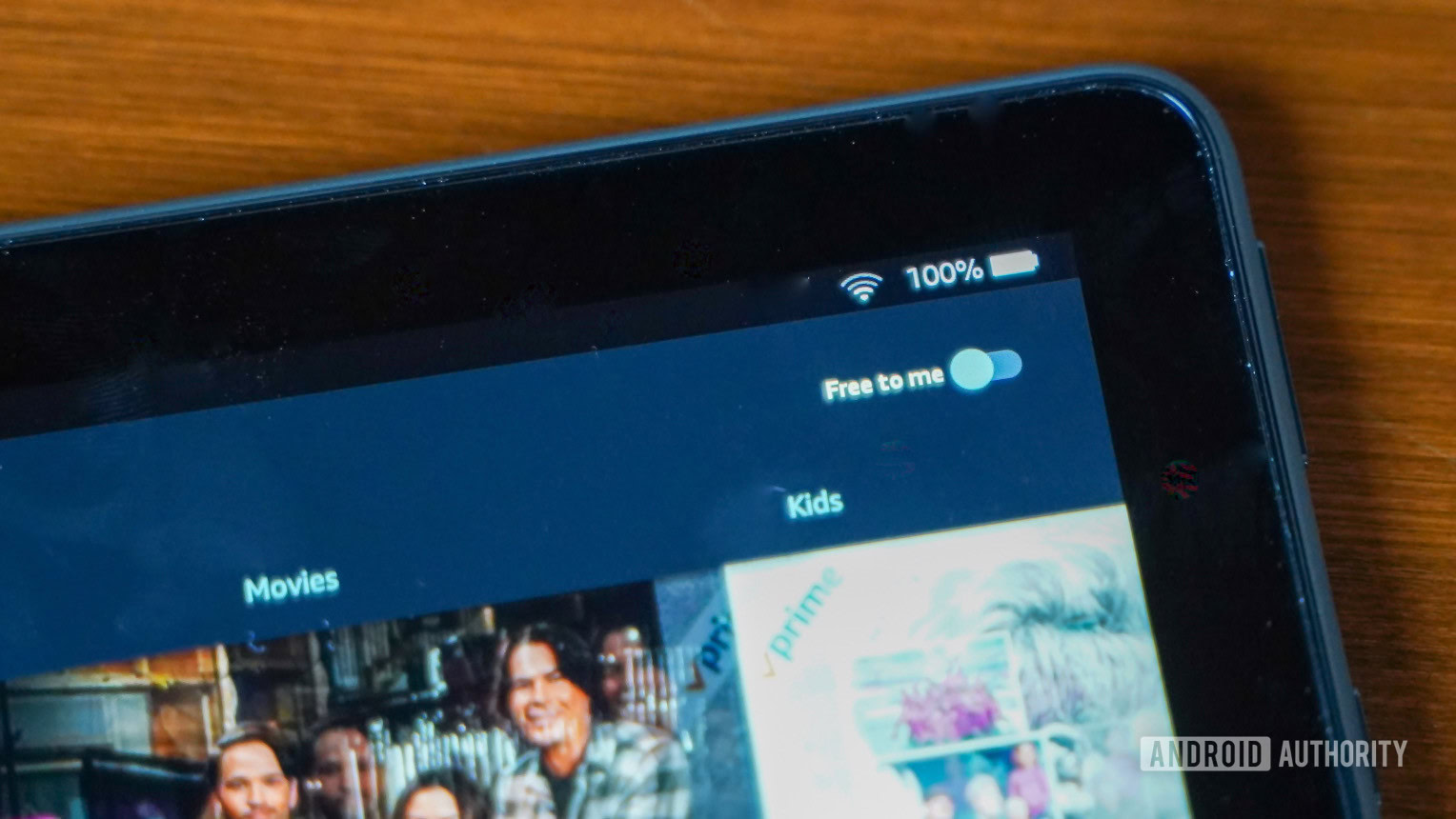
Amazon doesn’t say how big the battery is, but it is rated for 12 hours of battery life. Twelve hours of active screen time is exactly what the Fire HD 10 Plus delivers. I found the tablet consistently met Amazon’s rated run time no matter how I used the tablet.
Standby time seemingly lasts forever. You can easily set the tablet aside for a week and discover that the battery life hasn’t drained at all while not in use. That’s handy if you forget to charge it.
Speaking of which, charging the tablet takes forever. Using the included 9W charger means you’ll have to plug in for four whole hours to get the tablet charged from 0% to 100%. Even charging from 50% to 100% takes several hours.
One of the main additions to the Amazon Fire HD 10 Plus over the standard HD 10 variant is support for Qi-based wireless charging. There are plenty of options for compatible chargers, but Anker makes a custom charging dock for it ($50) that acts as a stand. This dock charges at 15W and will shave 30 minutes off the total charging time. For my money, that’s not quite worth it.
Thankfully the tablet doesn’t need charging all that often.
How powerful is the Amazon Fire HD 10 Plus?
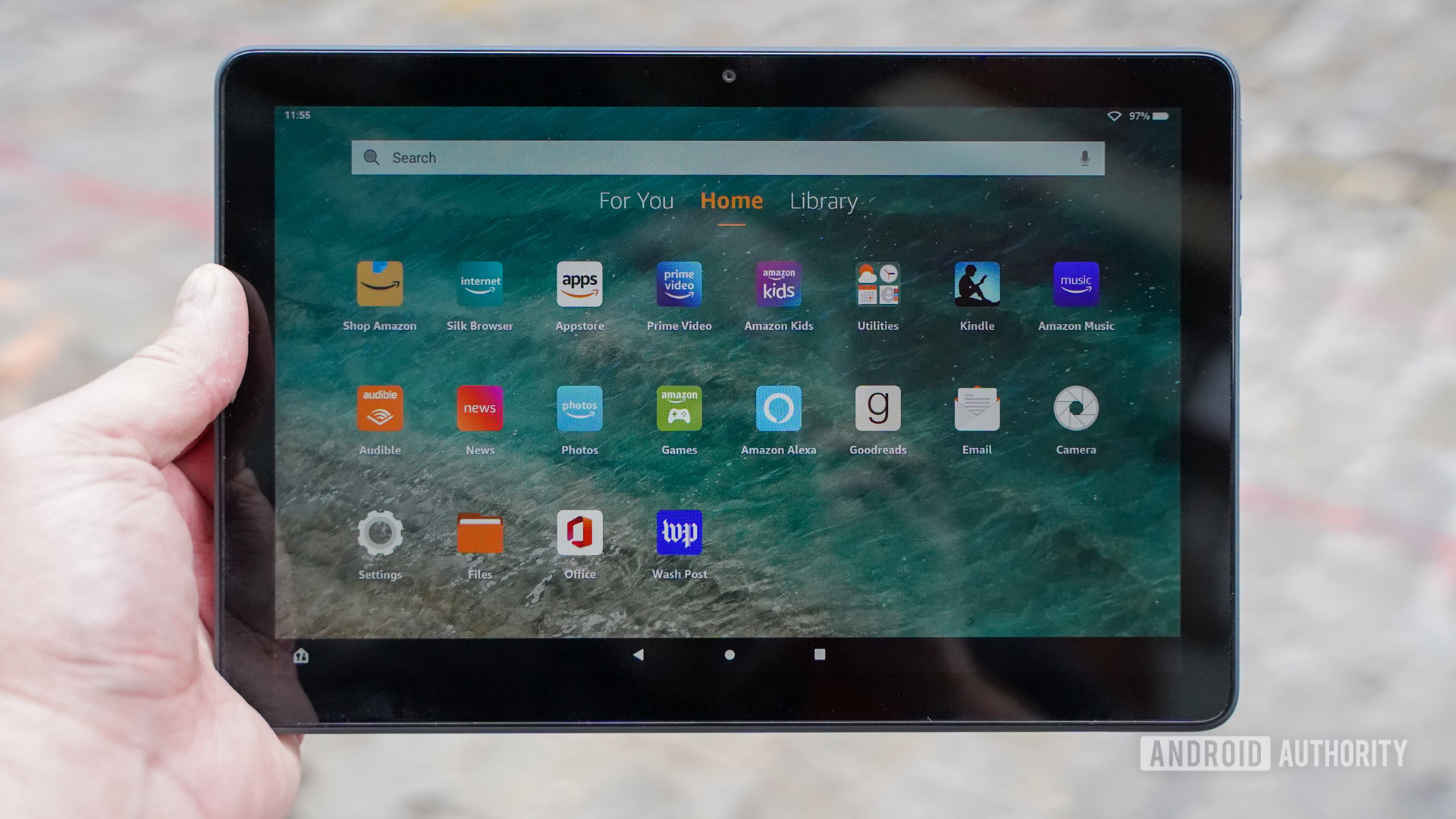
The Amazon Fire HD 10 Plus is powered by a 2.0GHz, octa-core MediaTek Helio P60T processor with 4GB of RAM. The standard Fire HD 10 has the same processor but only 3GB of RAM.
Related: How to turn your Amazon Fire tablet into a smart home control hub
I’d call the tablet just responsive enough. It doesn’t feel fast, but it doesn’t feel slow either. Swiping between home screens is mostly fluid, and the majority of apps open with respectable speed. Larger apps, such as games, were a bit slower to open and didn’t run quite as smoothly. The camera app, for instance, was a janky disaster. The same goes for Microsoft 365, which ran slowly on the tablet — that doesn’t bode well for would-be mobile workers.
With less RAM, the standard Fire HD 10 may not be quite as quick on its feet. Something to keep in mind if you’re hoping to save some cash.
Anything else?

- Stereo speakers: The stereo speakers located on the top edge sure do push a lot of air. You can set them to crazy-loud levels, but the sound suffers for it. The speakers sound their best at middle volumes. Dolby sound is on board, but I’ve heard better Dolby performance on other tablets.
- Cameras: Both cameras are undeniably bad. There’s a 5MP shooter on the back and a 2MP shooter on the front. Your still shots and video chats alike will be a dark, grainy mess.
- Productivity: The productivity bundle from Amazon ($250) includes a Bluetooth keyboard and, more importantly, a year-long subscription to Microsoft 365. With these additional tools, you can get work done on the tablet if you rely on Office as your productivity platform. Microsoft 365 includes Outlook, Word, Excel, and PowerPoint, which should be enough for those who need Microsoft for work. As with most tablets, a keyboard is necessary for real productivity. The one Amazon has on offer in the productivity bundle is decent enough for punching through emails, but I wouldn’t want to write several thousand words about tablets on it. Remember that iPads and Android tablets can run Microsoft 365, too, as of course can Microsoft hardware. Based on the sluggish performance of Microsoft 365 on the Fire HD 10 Plus, I’d recommend another tablet for working. Moreover, if you need Google Services to get your work done, you’ll need to look at tablets other than the Fire HD 10 Plus.
Amazon Fire HD 10 Plus specs
| Amazon Fire HD 10 Plus | |
|---|---|
Display | 10.1-inch IPS LCD 1,920 x 1,200 16:10 |
Processor | 2.0GHz octa-core MediaTek |
RAM | 4GB |
Storage | 32GB/64GB |
Cameras | Rear: 5MP Front: 2MP |
Battery | Up to 12 hours Qi wireless charging |
Connectivity | Dual-band Wi-Fi Bluetooth 5 3.5mm headphone jack USB-C |
Dimensions | 247 x 166 x 9.2mm 468g |
Color | Black |
Value and competition
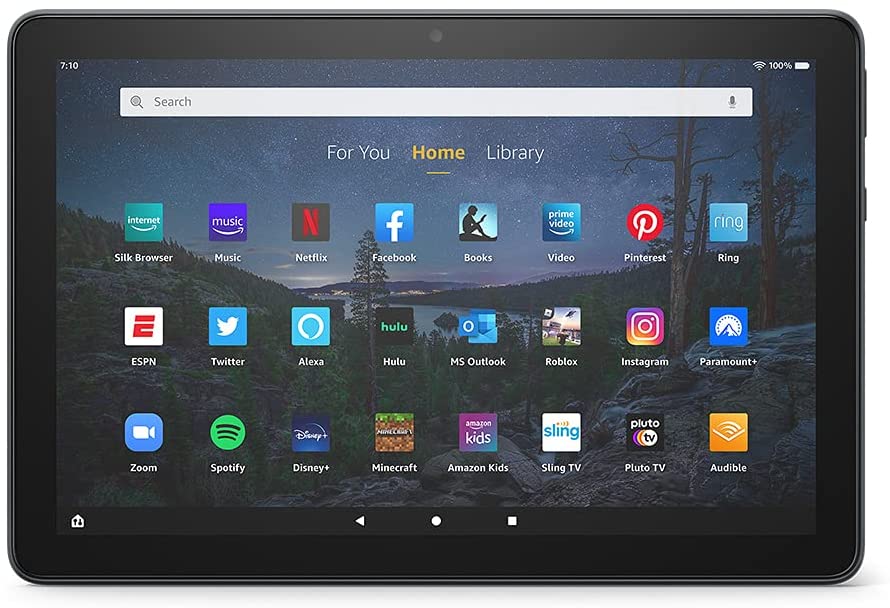
Calculating the value question depends on your commitment to Amazon Prime. Many people subscribe to Amazon Prime for the free shipping alone and never use the content benefits. Some use Prime for both shipping and content. It’s the latter group that Amazon is targeting with its Fire HD tablets. Whichever camp you fall into, the Fire HD 10 Plus requires Prime to reach its full potential, which is what gets you access to Amazon’s vast library of content. That means Amazon Prime Video, Amazon Music, Amazon Photos, and Kids Plus. Amazon Prime costs $119 per year. Add that to the price of the HD 10 Plus and suddenly it’s a different story, isn’t it?
If you’re already sold on Prime, at $180 for 32GB with ads, the entry-level model is a solid piece of hardware for consuming content. I think it’s worth paying the extra $15 to get an ad-free experience. Even then, $195 isn’t a bad chunk of change for this screen and battery life.
Related: The best cheap tablets
The most significant competitors to the Fire HD 10 Plus come from Amazon itself. Primarily, there’s the stepped-down Fire HD 10 ($149). The HD 10 loses 1GB of RAM and wireless charging, and comes in more colors, but is otherwise identical to the 10 Plus. If you’re looking for something even smaller and cheaper, you can choose between the Fire HD 8 ($89) and Fire HD 7 ($49) models. These affordable tablets from Amazon get you access to the same content, albeit with smaller displays and slower performance.
If you’re specifically shopping for a kid, don’t forget to look at Amazon’s kid-focused tablets, which come in 7-, 8-, and 10-inch models. The 8-inch model ($139) is a good balance for kids, who can benefit from the smaller form factor.
The biggest competitor to the Fire HD 10 Plus comes from Amazon itself.
Then there are low-cost Android tablets to consider. Most of the budget fare that’s in the general price range includes competitors such as the Lenovo M10 HD ($129) and the Samsung Galaxy Tab A7 ($229). These are solid tablets, and the Lenovo M10 HD even acts like a Google Nest display with its included dock.
You’d have to spend at least $300 to get an entry-level iPad ($329). If you’re serious about access to millions of apps, Google services, and Apple’s wider ecosystem, that’s what you’ll have to spend. You’ll also get a more flexible home screen experience, as well as dramatically speedier performance and a solid software commitment from Apple. The Microsoft Surface Go 2 ($399) is even pricier, but gives you full Windows.
It’s worth remembering again that Prime subscribers can get all of the aforementioned services on these alternative tablets via the iTunes App Store, Google Play Store, and Windows Store, so it really boils down to how much you want to pay for the hardware and how flexible you need it to be. Amazon’s tablets are the least adaptable of the bunch thanks to Fire OS.
Amazon Fire HD 10 Plus review: The verdict
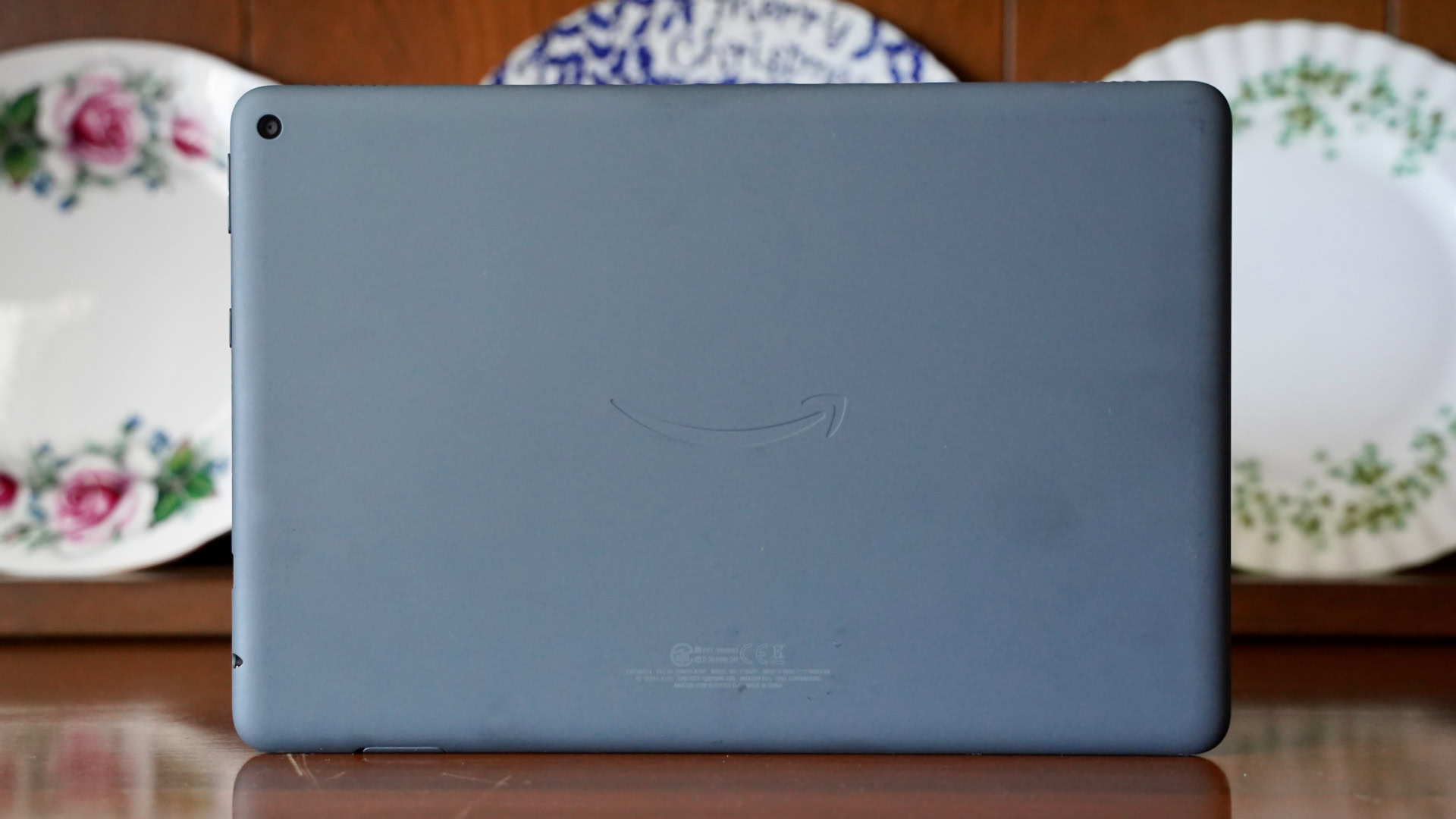
As far as Amazon tablets go, the Fire HD 10 Plus is the cream of the crop. It’s got the best screen, solid battery life, and the best performance you can get from an Amazon tablet, and it is available at price points ranging from $180 to $250 depending on the options you choose. To get the most from the tablet, you’ll also need Amazon Prime, which costs another $119 per year. That’s what gives you access to free movies, music, and photo storage.
The Amazon Fire HD 10 Plus doesn’t make sense for everyone, particularly those who rely on Google Services for their email or work. Fire OS may be Android under the hood, but it relies on Amazon Services and thus isn’t the best option for those invested in Google. On the flip side, Amazon partnered with Microsoft to make sure that Office users have access to their work apps on the Fire HD 10 Plus.
If you absolutely must have access to Google, Amazon's Fire tablets are not for you.
If you’re shopping for an Amazon tablet, this is the one we recommend. Sure, it’s larger and more expensive than the other models from Amazon, but the screen and battery life are worth the added bulk and expense. You could save yourself $30 and go with the standard Fire HD 10, but I worry about what the lower amount of RAM might mean for performance.
If you need more flexibility from your tablet, particularly when it comes to apps, you may be better served by a slightly more expensive slate running full Android or even iPadOS. These will set you back more, but pay dividends when it comes to performance and getting work done.
Thank you for being part of our community. Read our Comment Policy before posting.